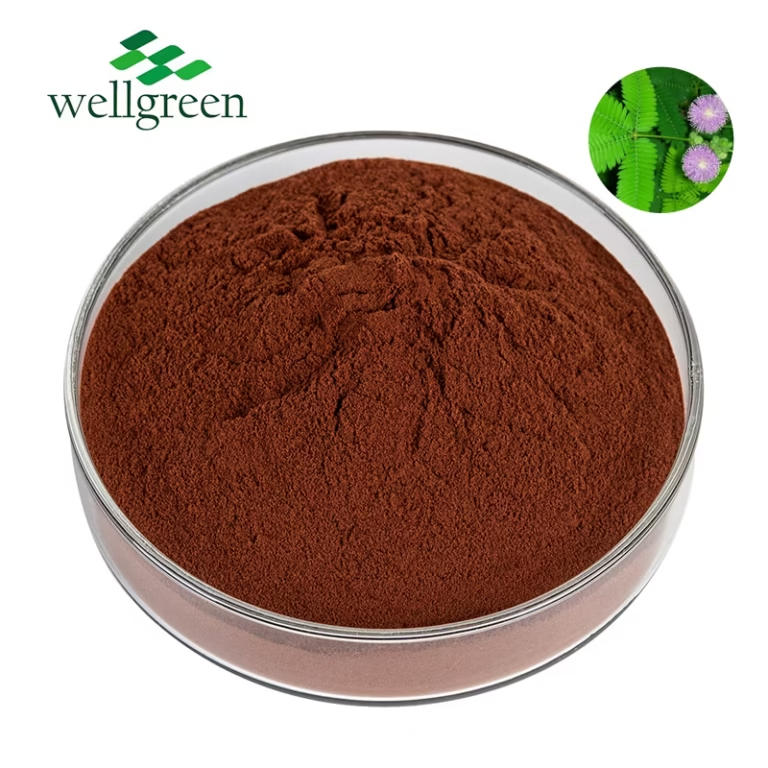Mimosa Hostilis: A Sacred Plant for Indigenous Cultures
Mimosa Hostilis: A Sacred Plant for Indigenous Cultures
Blog Article

Mimosa hostilis is a venerable plant deeply ingrained in the traditions of various Indigenous cultures across South America. For centuries, it has been employed by indigenous communities for its comprehensive spiritual and medicinal applications. The root bark, known as teonanácalli, is particularly revered for its entheogenic effects, believed to induce profound visions that facilitate transformation.
Through ceremonies, the plant spirit of Mimosa hostilis is invoked, guiding individuals on a quest of self-discovery and understanding with their inner selves. The knowledge about this sacred plant has been transmitted through generations, preserving the rich cultural heritage and insights of these communities.
Delving into MHRB Extract: The Mysteries of Mimosa Hostilis
Mimosa hostilis, a tropical plant indigenous to the Americas, has captured the attention of both researchers for centuries. This remarkable species harbors within its roots a potent extract known as MHRB, which has gained significant attention in recent times.
MHRB extract is celebrated for its effects, often associated with altered states of consciousness. Ethnobotanical studies suggest a long history of MHRB use in cultural practices.
- Researchers continue to explore the active compounds of MHRB, seeking to illuminate its full depth of effects.
- The nuances surrounding MHRB usage require responsibility. It is essential to engage the expertise of knowledgeable individuals before exploring any practices involving this powerful compound.
Exploring the Ethnobotanical Uses of Mimosa tenuiflora
Mimosa tenuiflora, commonly acknowledged as "mimosa", holds a significant position within the ethnobotany literature of diverse tribes. Its multifaceted properties have been utilized for centuries in ancestral medicinal practices, as well as in sacred ceremonies. The roots of this remarkable plant possess a rich repertoire of bioactive constituents believed to exhibit healing effects.
From curing ailments like inflammation to enhancing spiritual connection, Mimosa tenuiflora has long been respected for its profound influence on human health.
ALook into the Chemistry and Pharmacology of Mimosa Hostilis Root Bark
Mimosa hostilis root bark contains a complex chemical profile, primarily known for its significant concentrations of alkaloids. Among these, copyright and tetrahydroharmine are particularly relevant. These compounds possess a range of pharmacological activities, including hallucinogenic effects. The bark is also other alkaloids, such as norharmane, which may contribute to its comprehensive pharmacological profile.
The traditional employments of Mimosa hostilis root bark encompass a range of healing purposes, particularly in native communities. However, it is crucial to recognize that scientific research on the efficacy of these uses remains scarce.
Tapping into the Power of copyright with Mimosa Hostilis
Mimosa hostilis, a tree native to South America, has captured the attention of researchers and individuals alike for its potent chemicals, particularly dimethyltryptamine, or copyright. copyright is a powerful psychoactive substance known for producing intense experiences. By ingesting the bark of Mimosa hostilis, one can access the realms of copyright-induced experiences. It is important to remember that copyright is a potent substance and should be treated with respect.
- Safe use is paramount, and seeking guidance from experienced individuals or knowledgeable sources is highly recommended.
- The experience of copyright can be both rewarding but also potentially overwhelming. It is crucial to prepare both mentally and physically for the outcomes that may arise.
copyright from Mimosa hostilis offers a unique opportunity to journey within the depths of consciousness, possibly leading to spiritual growth and awareness.
Ethical considerations Using Mimosa Hostilis
The utilization of Mimosa hostilis for personal purposes raises a myriad of moral questions. While some argue that its historic significance warrants respect and tolerance, others caution its use due to potential harmful consequences. It's crucial to consider this complex issue with sensitivity, taking into account the cultural contexts and potential implications. A informed perspective is essential for navigating the ethical terrain surrounding Mimosa hostilis.
Growing Mimosa Hostilis: A Guide for Growers
Embarking on the adventure of cultivating Mimosa Hostilis can be a rewarding experience for the dedicated grower. This fascinating plant, indigenous to tropical regions of the Americas, has earned significant attention in recent years due to its peculiar properties. Prior to your cultivation endeavor, it is crucial to grasp the specific needs this plant demands to thrive.
- Guaranteeing adequate sunlight is paramount for healthy Mimosa Hostilis growth. These plants thrive in unfiltered sunlight, ideally receiving a minimum of ten hours per day.
- Preserving well-drained soil is essential to prevent root rot, a common problem that can devastate your plants. A mixture of sandy soil with composted matter is perfect.
- Frequent watering is necessary, but be mindful not to overwater your Mimosa Hostilis. Allow the top inch of soil to dehydrate before providing another irrigation.
The Shamanic Traditions Surrounding Mimosa Hostilis
Deep within the timeless forests of South America, the shrine of vision have been practiced for generations. Among these enchanting allies is Mimosa Hostilis, a humble plant revered by the shamanistic traditions of indigenoustribes. It embodies within its roots a wealth of knowledge, guiding seekers on their journeys into the unseen.
The medicine men understand that Mimosa Hostilis is not simply a medicinal agent; it is a portal between worlds, connecting us to the powerful energies that sustain all of creation.
Navigating Legal Problems with Mimosa Hostilis
The legal status of mimosa hostilis varies greatly from one location to another. This means that the acceptability of possessing, using, or raising this plant revolves around your specific area.
Furthermore, laws and regulations concerning mimosa hostilis are constantly changing. It is therefore essential that you carefully research the applicable legal click here framework in your region.
- Talking to a legal professional who specializes in cannabis laws is highly suggested.
- Keeping informed about any updates to the law can help you prevent any potential legal issues.
Mimosa Hostilis and Spiritual Exploration: A Journey Inward unveiling
The ancient wisdom whispered through the rustling leaves of Mimosa Hostilis calls to explorers on a mystical quest. Embarking upon this path is to awaken hidden dimensions within, where the veil between worlds thinns. It's a profound experience that illuminates the soul, revealing truths sleeping beneath the surface. As you blend with the essence of this sacred plant, be prepared for insights that challenge your worldview.
- Embrace the unknown with an open heart and a eager mind.
- Surrender all expectations and allow yourself to be guided by the flow.
- Remember, this is a path of self-discovery. Believe in your own inner compass.
The wisdom gained through Mimosa Hostilis vibrates long after the experience has faded. It is a gift that can change your life in profound and permanent ways.
Understanding the Dangers and Benefits of Mimosa Hostilis
Mimosa hostilis is a plant native to South America, gaining increasing attention for its potential pharmacological properties. While it contains valuable compounds like copyright, responsible for its psychoactive effects, it's crucial to approach this plant with respect. Understanding both the hazards and the benefits of Mimosa hostilis is essential for safe and informed use. Potential negative consequences can include unpredictable behavior, emphasizing the need for thorough research, responsible consumption, and a safe environment.
- It's important to consult with a healthcare professional before using Mimosa hostilis or any products derived from it.
- Proper dosage is crucial to minimize potential risks.
- Be aware of the legal status surrounding Mimosa hostilis in your area.
- Always prioritize safety and well-being when exploring the use of this plant.
 Report this page
Report this page